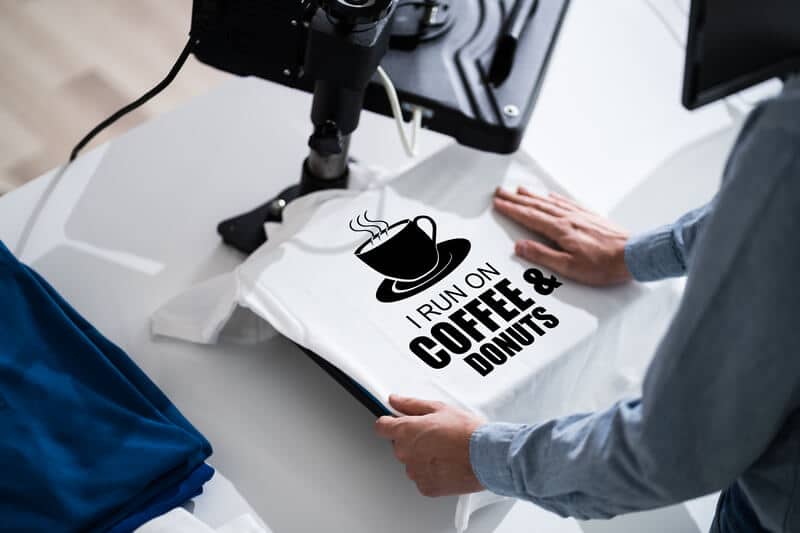A heat press t-shirt business is probably one of the easiest and financially rewarding home businesses you can set up. It does not require much capital, nor does it require too much equipment. I’ve done some research to provide you with eleven of my essential materials that you will require for getting your heat-press business up and running.
You will require the following eleven essential materials to get you going in your heat press t-shirt business:
- Heat Press
- Vinyl Cutter
- Heat Transfer Vinyl
- Teflon Sheet
- T-shirts
- T-shirt Designs
- Desktop Computer/ Laptop
- Graphic Design Software
- Printer
- Ink Cartridges
- Customers
Let us see how each of these materials listed above will benefit you in your heat press t-shirt business.
1. Heat Press For T-Shirt Printing
When it comes to your heat press t-shirt business, the first piece of equipment you will need is, of course, a heat press! And there are two options for you to choose from in the heat press range.
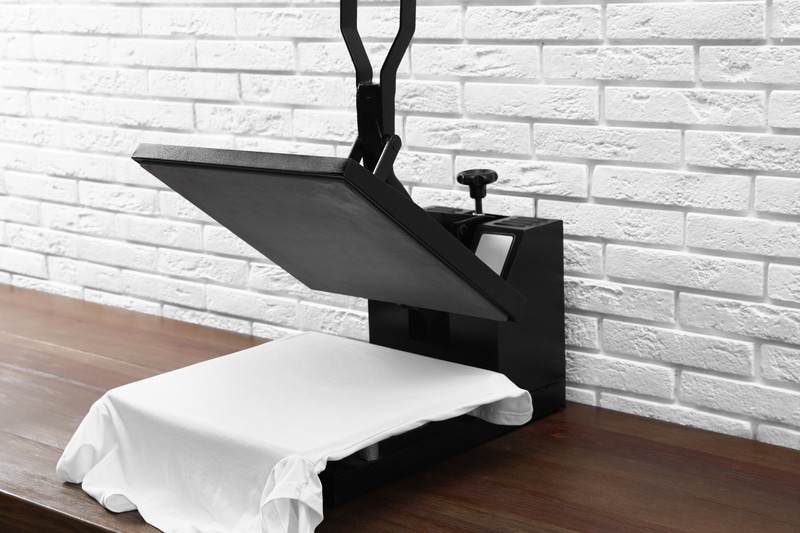
The first type of heat press is a manual 15×15 clamshell heat press. This smaller heat press will be ideal if you have limited space to work with. The clamshell heat press is ideal for start-up home businesses. It features a fully digitized temperature and pressure gauge.
If you plan to run your business for a longer-term, then the automatic 16×24 heat transfer press should be a good investment. It is an automatic press meant for larger items and is a fully-featured heat press. The automatic press has a timer that is set so that the press releases at the end of the set press time. This allows you to multi-task with no risk of pressing for too long.
2. Vinyl Cutter
There is no substitute for a good vinyl cutter unless you plan to cut out your designs by hand! Vinyl cutters will cut out your designs from your graphic design programs for transferring onto your t-shirt. When choosing a vinyl cutter, you need to consider the size of the heat transfer vinyl and the number of tees you will produce per day.
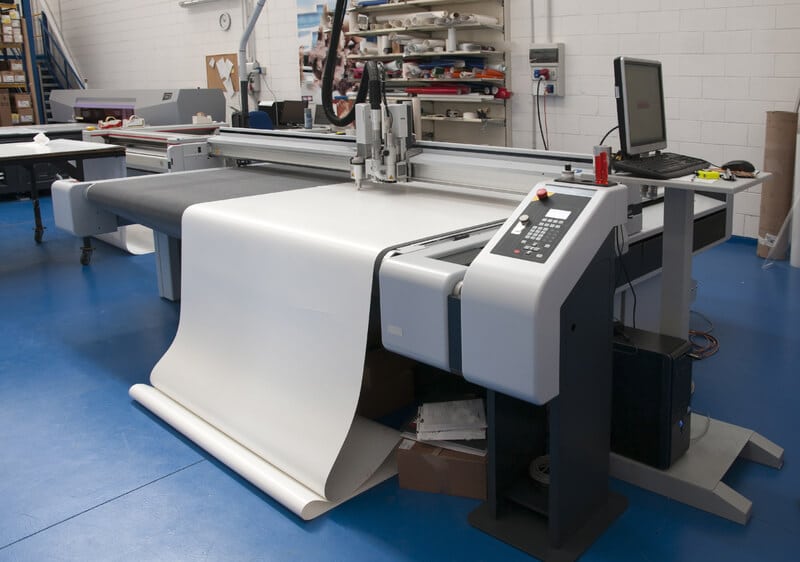
There are multiple types of vinyl cutters on the market. Two of the smaller vinyl cutters meant for home businesses and hobbyists are:
In addition to these cutters, I have personally used a larger cutter from US Cutter similar to this one on Amazon: US Cutter Bundle
3. Heat Transfer Vinyl
When buying transfer vinyl, you must ensure that you buy the right transfer vinyl. The Cricut and Silhouette cutters sell their own brands of vinyl, available at Michael’s or on Amazon. Personally, I had great success buying vinyl for my larger cutter from Heat Transfer Warehouse. They carry so many different types of high-quality vinyl at a great price.
I really liked the Siser easy weed for a vinyl that is easy to work with. But they also have glitter vinyl, pattern vinyl, soft-touch light vinyl, and much more.
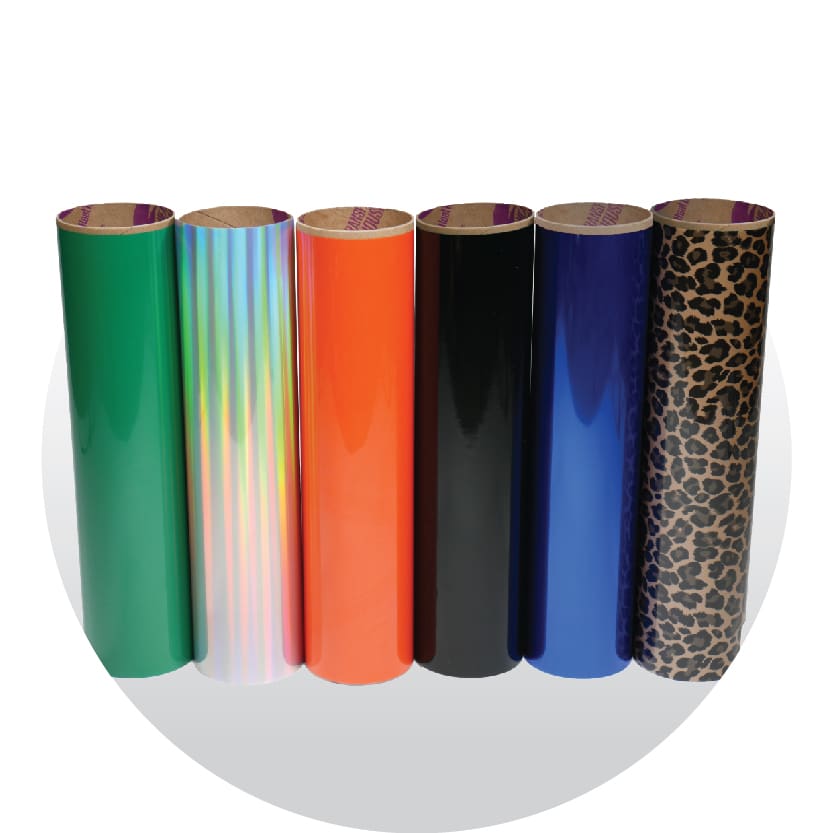
Heat transfer vinyl used to be limited to the thick, rubbery vinyl that you see on sports uniform numbers and lettering. But today, there are so many great types of vinyl that open up the possibilities of what you can do with your own t-shirt creations.
4. Teflon Sheets
Teflon sheets are made from an anti-stick material called PTFE, and it is a heat-resistant non-stick sheet that forms a protective barrier between the vinyl, ink, t-shirt fabric, and the heat press’s heating element.
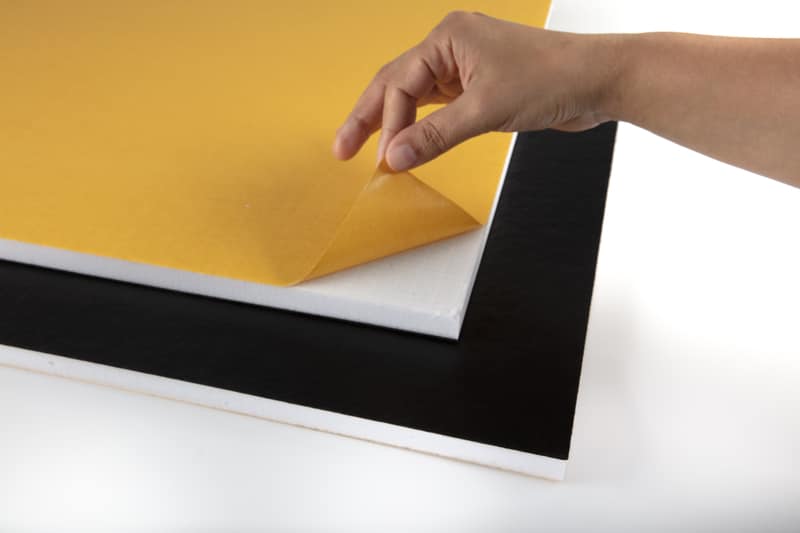
The primary purpose of Teflon sheets is to protect your t-shirt from damage when placed on the heat press. Once you have placed your t-shirt onto the heat press, you lay a piece of Teflon sheeting over the design and press down the top heating plate onto the t-shirt.
5. Blank T-Shirts
No heat press t-shirt business is complete without its main ingredient, the blank t-shirt itself! If you are going to be doing quality designs, you will need good-quality fabric t-shirts, which can sometimes get costly.
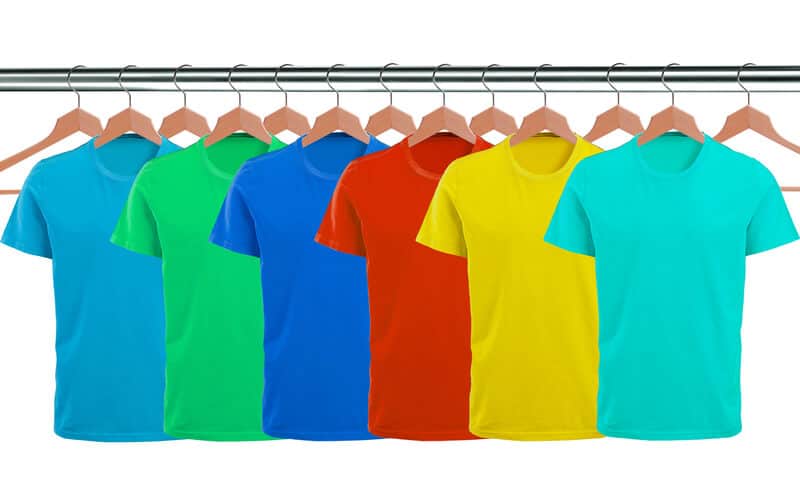
Your choice of fabric for t-shirts can range from natural fabrics to synthetic fabrics. In the natural fabric range, you get a variety of fabrics to use, and these are:
- Cotton
- Ring-spun Cotton
- Combed Cotton
- Organic Cotton
- Pima Cotton
- Slub Cotton.
In the synthetic range of fabrics, you will find,
- Lycra
- Nylon
- Polyester
Each of these fabrics I have listed above has its unique advantages and disadvantages. As I have mentioned above, to print quality t-shirts, always use good quality fabric, and not a cheap t-shirt that will spoil and fade away after a few washes.
Two of the most popular blank t-shirt brands are Bella Canvas and Next Level. If cotton is your choice, the Bella Canvas 3001 or Next Level 3600 tee are great choices and are two of the most popular choices for t-shirt sellers on Etsy.
For more information about all the fabric types for t-shirts, have a look at this article: 13 Best T-shirt Fabric Types You Should Know. It would be best to consider the size range of the tees you will be pressing.
6. T-shirt Designs
The t-shirt design makes one t-shirt stand out from every other plain t-shirt. If you are skilled at making your designs, you can use a graphics package like Photoshop to create your unique design and then have those designs printed on the tees.
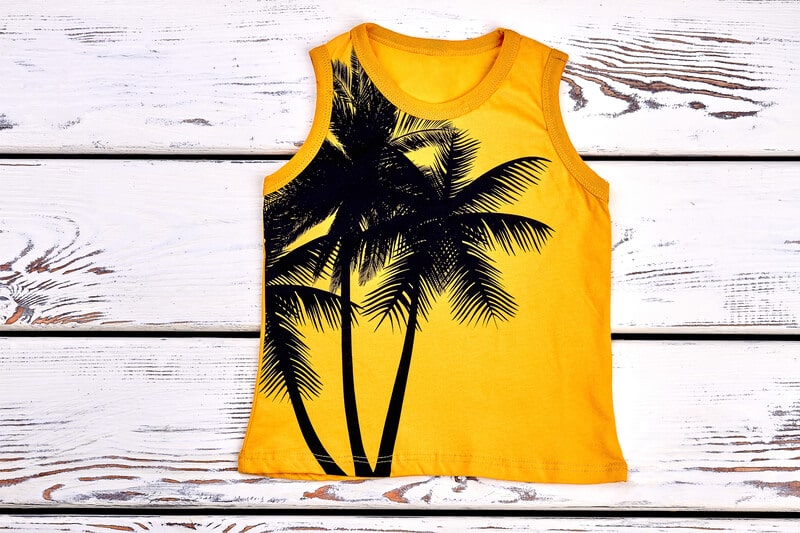
However, if you are not adept at creating your designs, you could search for ready-made designs online and use those to transfer to your tees.
My go-to for getting high-quality designs created at a good price is DesignCrowd.com.
There are also numerous online sites like Rush Order Tees and Custom Ink to create a unique t-shirt design using ready-made templates. Personally I’m not a huge fan of templates. For less than $100, a designer can create an awesome unique design for your brand.
Sites like Pinterest and Etsy will provide you with loads of design ideas. However, be careful not to violate any copyright laws for those designs.
If you are a skilled artist, you could hand draw your designs onto paper, scan those into your computer and convert them to vector files with Adobe Illustrator. Then send them to your cutter. And voila!
7. Desktop Computer / Laptop
A laptop or desktop computer is necessary to first design your t-shirt and send your design to the cutting software. This is an obvious need. Anyone who runs a business will need a solid computer.
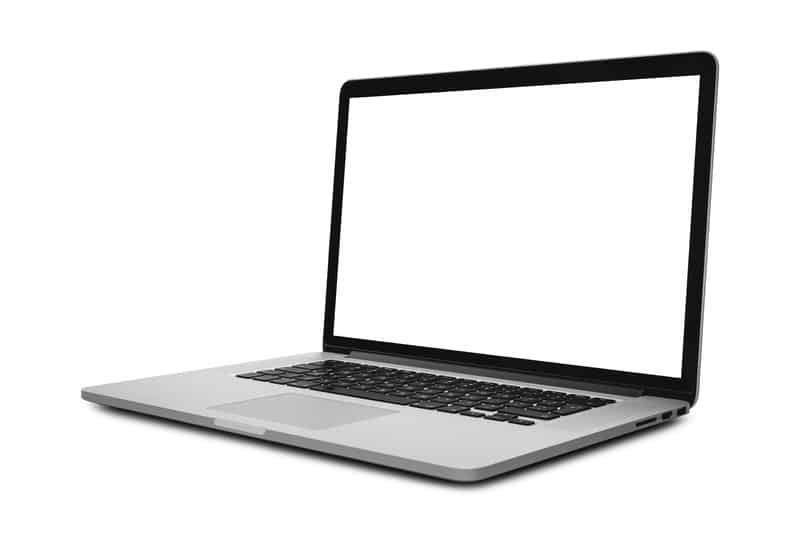
But for your heat press-shirt business, you want the latest operating system installed that is compatible with the design software you plan to use. Since your business requires a lot of images for designs and website graphics, make sure your computer has plenty of storage space.
8. Graphic Design Software
If you are going to design your t-shirts yourself, you will need graphic design software. There are several graphic design packages out on the market that you can use. You need to pay a premium price for some; others are freemium versions that provide you with a limited set of features.
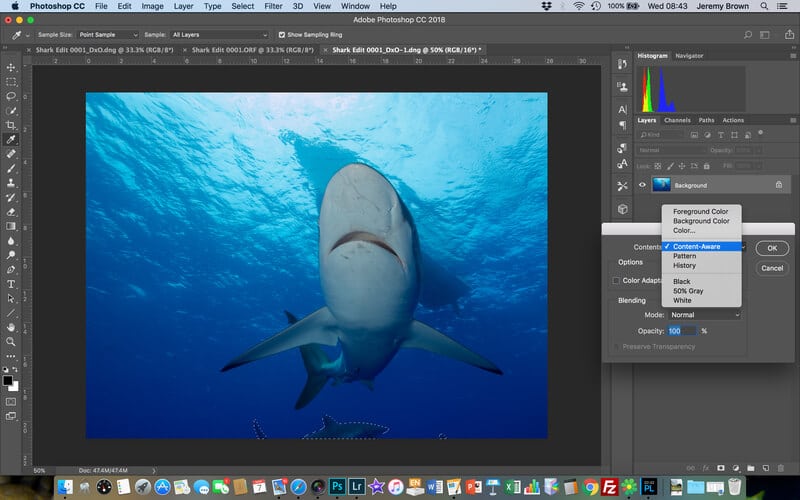
The most popular graphic design software used widely today is Photoshop. If you plan to do several designs, not just on t-shirts but on other materials, then Photoshop is an excellent tool for the job.
There are graphic design packages like this CorelDraw Graphics Suite from Amazon, a professional design package at a much lower price than Photoshop. When looking for design packages, your design suite needs to allow you to create vector graphics.
You can also use the premium version of Canva, which is only $12/month. Canva is one of the easiest online tools to build your t-shirt designs, social graphics, and more.
Check out this Canva T-shirt tutorial:
9. Printer
When choosing a heat transfer printer for your t-shirt business, it is a good idea to invest in a quality printer that will give you years of uninterrupted service. There are a few key considerations that you must consider when choosing a printer.
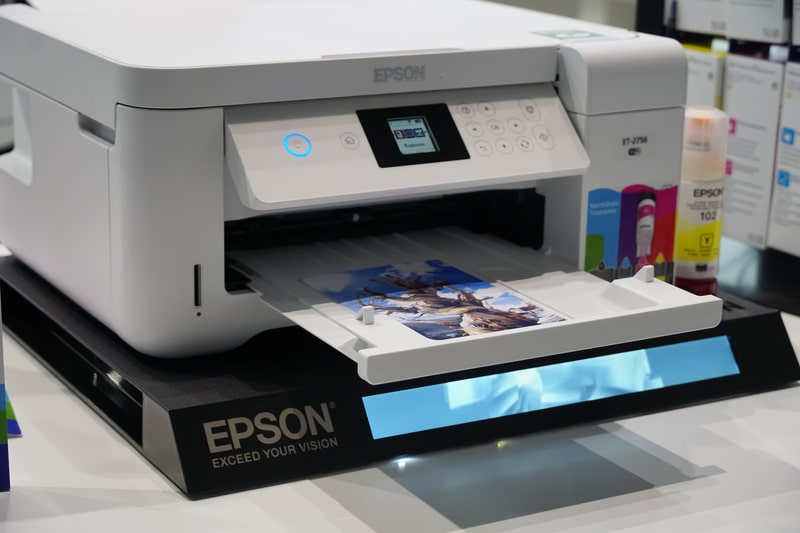
You must decide on the types of materials you will be printing on, such as t-shirts, transfer paper, etc., since you might not get the same print quality for each type of material. A second point you need to consider is whether you will be using the printer just for heat transfer printing and/or for everyday printing.
You also need to consider the print quality, printing speed, and printing quantity. The next important decision you should make is choosing between an inkjet or LaserJet printer.
If you have a low budget, printing to a laser printer might be a good choice since the toner costs are low. This HP Laserjet Pro should be sufficient for all of your printing requirements.
If you plan to print complete designs to fabric, then an inkjet will be preferable since they print at a higher quality resolution.
10. Ink Cartridges
When buying ink cartridges, you should consider buying them in bulk if possible. This is because you do not want to run out of ink when you are in the middle of a big client order.
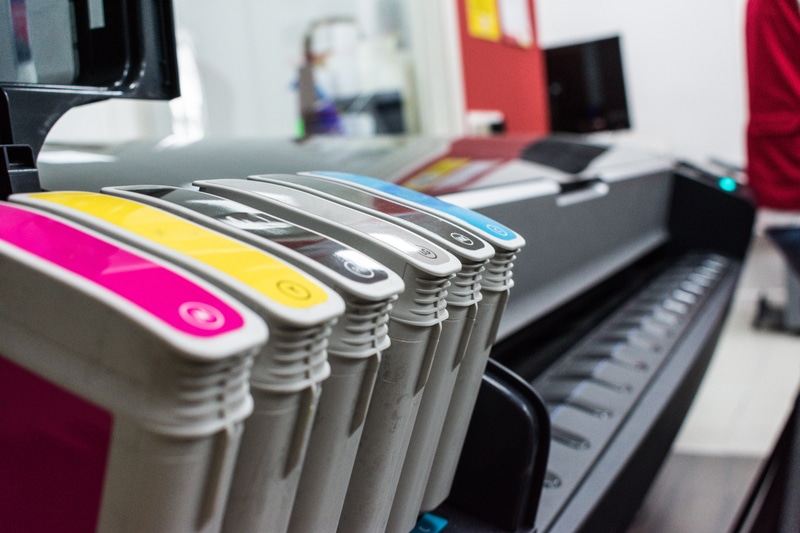
In addition, if you plan to print high-quality designs, then you will need good quality ink. You might also want to have a wide range of colors that you can choose from to meet your clients’ color requirements.
11. Customers, Customers, Customers!
The last but most crucial requirement for your heat press t-shirt business is your customer. This is possibly an essential aspect of your business, whether you already have your clientele or have yet to establish your client base.

Before you begin your heat-press t-shirt business, you should know and understand your target market. Without customers, you will be unable to build and grow your business.
If you target corporate customers, you need to have conservative and formal designs printed onto short-sleeve or long-sleeve tees. You can be a little adventurous and print more vibrant designs onto sleeveless tees or even tank tops if you target youth.
You can launch your t-shirt business using social media to attract your target audience. With the broad exposure of social media, you will most likely start getting orders for your tees in no time!
Conclusion
As mentioned initially, starting your heat-press t-shirt business is an easy way to have a small business started in no time at all. It requires only eleven essential materials, but it is smooth sailing from there once you are up and running. With my ten essential materials for starting your t-shirt printing home business, you will be up and running in no time at all!
Bryan E. Robinson is the former owner of TshirtGrowth. He has sold t-shirts since 2006 through dropshipping, screen printing, vinyl printing, DTG, Print on Demand, and more. Bryan has created his own t-shirt designs through Photoshop, Canva, and other platforms, as well as worked with freelancers to create many of his designs. Besides t-shirts, Bryan has over 18 years of experience in online marketing with eCommerce, B2B SaaS, B2C products, and more.

